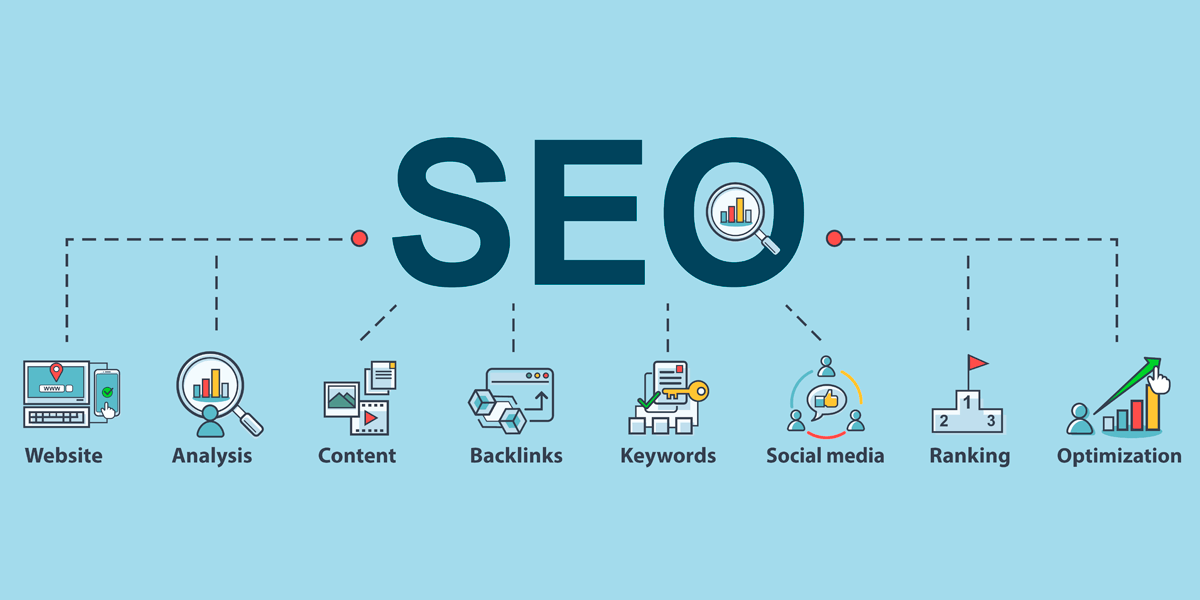Search engine optimization is an essential part of online marketing because it helps your business appear prominently in search results and drives more traffic to your website. If you’re new to SEO or need a refresher, this article will cover everything from fundamental principles to technical implementation details. Let’s get started!
What is SEO?
SEO stands for “search engine optimization.” It’s a broad term used to describe the process of improving the visibility of a website on search engines such as Google, Bing, and Yahoo. In plain English, search engine optimization is about getting more traffic from search engines.
How much traffic is another question. It’s not an exact science and traffic can range from a few hundred visits per month to millions. In fact, about 50% of online shoppers start their product searches on search engines like Google, Bing, or Yahoo.
How to Implement SEO Strategies

The first step of implementing SEO strategies is to assess the current state of your site. This means auditing what is currently on your site, how it is structured, and how consistent it is across the board. Once you’ve established a baseline, the next step is to identify opportunities for improvement. To do this, you’ll want to look at how your website is currently performing.
Here are a few ways to do this:
- Use Google Search Console to track your website’s performance.
- Run a few keyword searches and see what your competitors are up to.
- Run an audit of your website’s internal links.
Once you have a better idea of what you’re up against, you can start implementing the following strategies to improve your site’s performance.
Begin with Content Marketing
With so many different elements to SEO, it can be overwhelming to know where to begin. So, why not start with the most important aspect of SEO? Content marketing. Your website is a product. It needs to solve a problem or provide a value proposition that resonates with your target audience. However, you can’t just sell your product outright. Instead, you need to provide value through helpful information, insights, and original content. If you manage to do this well, you can establish yourself as an authority in your industry and generate consistent traffic to your website.
Create a Roadmap for Your SEO Strategy
Once you’ve laid out your content strategy and are ready to start implementing SEO strategies, it’s important to create a roadmap for your SEO strategy. A roadmap helps you organize your efforts and better manage your time. The good thing about SEO is that it’s never too late to start improving your website. With that in mind, you want to prioritize high-impact SEO strategies that can move the needle quickly and make an immediate impact on your site’s visibility.
Choose the Right Keywords
One of the first things you need to do is identify the right keywords to target. Search engines like Google use the information on your website’s content to create a searchable index of your site. The more keywords you can fit on your page, the higher you’ll rank in Google’s search results. However, it’s important to choose the right keywords and position them on your website strategically. You don’t want to overstuff your page with keywords or use a variation of the same keyword over and over again.
Be Authentic and Be a Good Steward of User Experience
When deciding which keywords to target, it’s important to be authentic and a good steward of user experience (UX). Putting yourself in your customer’s shoes will help you identify your customer’s exploration path on your website. Therefore, creating an engaging user experience is a critical component of SEO. It can determine whether someone stays on your site or quickly bounces off and navigates to a different website. It’s important to optimize your website for quick loading times, simple navigation, and streamlined conversions. Overall, your website should be easy to use and navigate.
On-site optimization
Once you’ve completed the above steps, you can start optimizing your website for SEO. This includes optimizing your website’s content, structure, URL, and more. You can improve the overall quality of your website content by following these best practices:
- Keep things short and sweet: Long-form content is great for in-depth information, but it’s not ideal for SEO.
- Write with your target audience in mind: Write with your readers in mind at all times, because what you want to say is less important than how you want to say it.
- Create high-quality, unique content: Don’t overdo the keywords. You don’t want to keyword-stuff your content or place unnecessary emphasis on certain words.
- Optimize your website structure: You can improve the click-through rates (and therefore the traffic) of your pages by optimizing the structure of your website.

Off-site optimization
After you have done the on-site optimization, the next step is to implement off-site strategies to increase your brand awareness and improve your page standing.
This includes optimizing your website’s backlinks. Backlinks are the links that lead back to your website. They can come from other websites, blog posts, guest posts, and more. The more high-quality backlinks you have, the better your website’s standing will be. Some of the best ways to build backlinks to your website include:
- Building engaging blog content
- Guest posting on high-authority websites
- Creating an influencer marketing campaign
- Concluding your SEO efforts with content marketing, social media marketing, and email marketing
Try Paid Ads to Track ROI
Once you’ve implemented all the high-impact SEO strategies outlined above, you can start to measure the ROI of your SEO efforts. To do this, you’ll want to invest in pay-per-click (PPC) ads. This is an easy way to track how your SEO efforts translate to actual revenue. PPC ads are advertisements that show up at the top of search engine results pages (SERPs). You can target specific keywords and bid on ad space directly. To get the most out of your PPC efforts, it’s important to track your results closely. This will help you identify which keywords are most profitable and how much you’re willing to pay to rank in those spots.
Summing up
With so many different elements to SEO, it can be overwhelming to know where to begin. Worry not because we are here to assist you. Get in touch with us to learn how our team of highly-skilled professionals can help you optimize your website SEO and user experience.
Be sure to stay up to date on the latest digital marketing news, too. The search engine landscape changes constantly, so you’ll want to make sure you stay informed.
Share:




